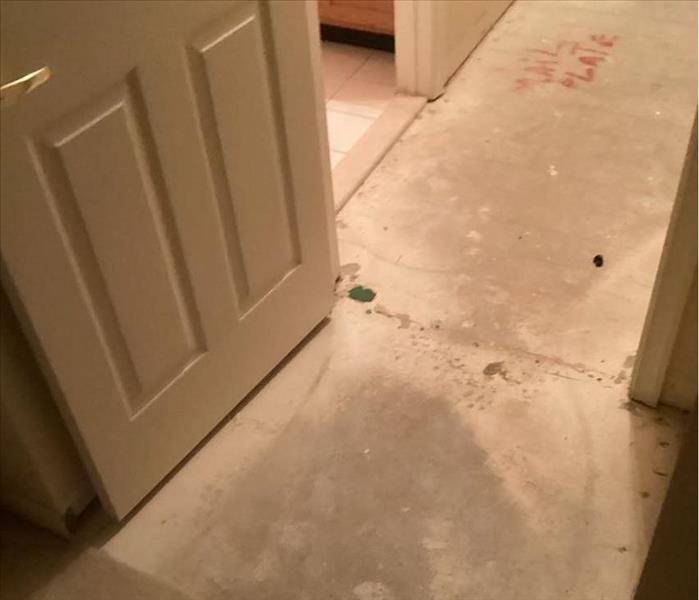Effective Drying Techniques After Water Damage: Air Movers, Dehumidifiers, and More
3/12/2025 (Permalink)
When water damage strikes in Sicklerville, NJ, time is of the essence. Whether caused by a burst pipe, flooding, or an appliance leak, excess moisture can quickly spread, leading to costly repairs. That’s why professional drying techniques are critical for restoring your home or business efficiently.
At SERVPRO®, we use industry-leading drying methods to eliminate moisture, prevent structural issues, and return your property to preloss condition. This guide covers expert-approved drying techniques, including air movers, dehumidifiers, and other specialized equipment to remove water effectively.
Why Drying Techniques Matter After Water Damage
Drying isn't just about letting water evaporate naturally—it’s a strategic process that speeds up evaporation and prevents further damage. Using the right techniques ensures that materials like drywall, wood, and flooring dry thoroughly, reducing the risk of long-term structural issues.
Professional restoration teams, like SERVPRO, rely on specialized equipment to accelerate drying. Here’s a closer look at the essential tools and techniques used in water damage restoration.
Top Drying Techniques Used in Water Damage Restoration
1. Air Movers: Accelerating Evaporation
Air movers, also known as high-velocity fans, are powerful tools that increase airflow across wet surfaces. By directing air at the right angle and speed, air movers enhance evaporation, making the drying process much faster.
How Air Movers Work:
- Create a continuous airflow over wet surfaces
- Prevent moisture from settling in building materials
- Reduce drying time by pushing moisture into the air
Strategically placing air movers ensures even drying throughout the affected area. These machines work best when used alongside dehumidifiers to capture excess moisture from the air.
2. Dehumidifiers: Extracting Moisture from the Air
Once moisture evaporates into the air, it needs to be removed before it settles elsewhere. This is where dehumidifiers come in. They pull moisture from the air and collect it in a tank or direct it out through a drain system.
There are two main types of dehumidifiers used in water damage restoration:
- Refrigerant Dehumidifiers – Work like an air conditioner, cooling the air to condense moisture.
- Desiccant Dehumidifiers – Use a drying material to absorb moisture, effective for large or heavily saturated areas.
Proper dehumidification ensures that the air in the space stays dry and balanced, preventing secondary moisture damage to walls, ceilings, and floors.
3. Injectidry Systems: Targeted Drying for Hard-to-Reach Areas
Some areas, like wall cavities and beneath flooring, are challenging to dry with standard equipment. Injectidry systems solve this by forcing dry air into these spaces using specialized hoses and small access points.
This technique is especially effective for:
? Drying inside walls without removing drywall
? Restoring hardwood flooring without total replacement
? Tackling moisture in cabinets, ceilings, and tight spaces
4. Containment Barriers: Focusing the Drying Process
Creating a controlled drying environment speeds up the process and improves efficiency. Plastic sheeting and containment barriers isolate the affected area, preventing moisture from spreading and maximizing the effect of air movers and dehumidifiers.
By focusing drying efforts in a smaller, controlled space, restoration teams can achieve faster and more effective results.
FAQs About Drying Techniques After Water Damage
How long does it take to dry out a water-damaged area?
The drying time depends on the extent of water damage, materials affected, and drying equipment used. On average, drying takes 3 to 5 days, but severe cases may require longer.
Can I use household fans instead of air movers?
Standard fans aren’t powerful enough to push moisture out of walls, flooring, or other porous materials. Air movers generate high-velocity airflow, significantly improving drying times.
Why is dehumidification necessary if air movers are already in use?
Air movers speed up evaporation, but without dehumidifiers, moisture will stay in the air and potentially reabsorb into materials. Dehumidifiers capture and remove airborne moisture for complete drying.
Do I need professional drying services, or can I dry the area myself?
For minor spills, DIY drying with household fans and open windows may work. However, for significant water damage, professional drying techniques ensure thorough moisture removal, preventing costly long-term damage.
SERVPRO: Your Trusted Water Damage Restoration Experts
Water damage can be overwhelming, but with the right drying techniques and equipment, your property can be restored quickly and efficiently. SERVPRO’s trained professionals use advanced drying technology to ensure every trace of moisture is removed, reducing restoration time and potential damage.
If you’re dealing with water damage, don’t wait—contact SERVPRO today for expert drying and restoration services.




 24/7 Emergency Service
24/7 Emergency Service
